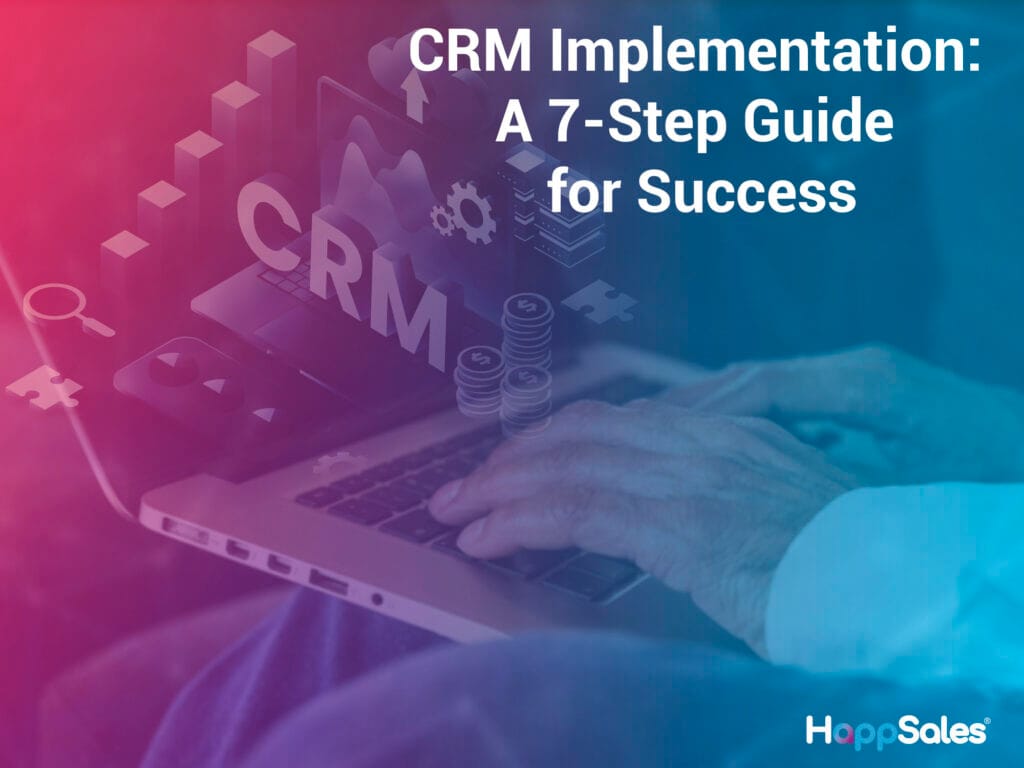Last updated on April 12th, 2025 at 11:06 pm
CRM implementation is a strategic move that helps streamline processes efficiently, enhance customer interactions, and drive revenue growth. A successful CRM implementation requires clear planning, understanding, collaboration across departments, and clear alignment with company goals.
Below is a comprehensive guide to navigating the CRM implementation process more efficiently.
Define Clear Business Objectives
The first and foremost step is to ensure the challenges you want to address using a CRM system. You must note all the pain points you wish to solve and the business outcomes you want to achieve through the CRM implementation. This serves as a good guiding principle to help you during the CRM journey. It also enables you to measure your outcomes after the CRM implementation.
Develop a Detailed Implementation Plan
Drafting a comprehensive plan outlining each phase of the implementation process is very important. It includes –
Timeline – Set realistic milestones & deadlines
Resource Allocation – Assign tasks & responsibilities to stakeholders
Budget – Total TCO including onboarding charges, licensing fees, customization, training, and implementation charges, etc.,
Risk Management – Identify potential risks and develop mitigation strategies.
Assemble a Cross-Functional Implementation Team
Form a diverse team from all relevant departments. This collaborative approach ensures that the stakeholders from different departments are taken into consideration. It also helps to address the different needs of all stakeholders. This leads to easy adoption of the CRM organization-wide.
Choose the right CRM Solution
Evaluate CRM solutions based on your defined objectives and organizational requirements.
You may consider the following factors before deciding on a CRM.
 Bonus TIP – The Ultimate Reference Guide on How to Choose a CRM
Bonus TIP – The Ultimate Reference Guide on How to Choose a CRM
Easy to Use
Users generally prefer a CRM that has a quick learning curve and is user-friendly. The navigation and data entry should be seamless. It is important that users without any technical expertise also find it easy. The actions that need to be performed should be easy to understand without need of much in-depth instructions.
Intuitive Dashboards
Having a dashboard that shows real-time data insights enables management to have a quick view of the performance of their team members. The dashboards should be easy to understand and give a comprehensive view of the performance of all team members. This helps you to take necessary actions wherever necessary.
Customization
The CRM you are selecting should align with your business objectives. So if there needs to be any customization involved, the CRM vendor should be able to offer it. This ensures that your pain points are solved and you are aligned with your business goals.
Adequate Training Support
The success of your CRM implementation depends on how quickly the users start using it. The vendor whom you choose should be able to give comprehensive training to all users. This is crucial so that users learn the system thoroughly. Their effectiveness and productivity will be maximized.
Pricing
Few CRM vendors offer tiered pricing. This is done mainly to attract clients with their low-tiered pricing with very limited features. The addition of users and features costs are very high and might go over your budget. Choosing a CRM vendor that gives comprehensive pricing with no hidden costs would be the right choice.
 Related Read – CRM Price Decoded | What drives CRM Cost & How to decide wisely
Related Read – CRM Price Decoded | What drives CRM Cost & How to decide wisely
AI Agents
With the development of AI, AI-powered agents are transforming CRMs by providing predictive insights & recommendations. When choosing a CRM look for a vendor who has these features embedded in their system.
Plan for Data Migration
It is a good idea to assess your existing data before doing your actual migration into the new CRM. Try removing redundant and outdated data to have more accuracy within the new CRM system.
Once you have analyzed the data and you are sure about what information to migrate, plan for data migration to the new CRM. It is important that you align the information and map the existing data fields in the new system.
Implement CRM in phases
Try to adopt a phased approach to manage the transition effectively. Begin with specific users who are well-experienced with the current workflow and can act as champions for the new system. Their feedback can help you fine-tune, and address any issues at an early stage. These power users can become trainers and ensure a smooth adoption throughout the organization.
Monitor Performance
After full CRM implementation, it’s important to evaluate the CRM performance regularly. See that the CRM has fully met your goals and objectives. Try getting regular feedback from the users and try to conduct regular training sessions so that new users also adapt quickly. Stay updated about the new features from the CRM vendor to leverage new advancements.
You may also read our in-depth guide on the challenges faced in CRM implementation to help you fine-tune your strategy.”
Final Thoughts
A successful CRM implementation does not mean to just deploy a new software, it’s important that the CRM transforms your business. It should be able to transform the 3 Ps – Performance, Productivity & Predictability. By following the 7-step approach mentioned above, you can ensure a smooth transition, and maximize the CRM value.
From setting clear objectives to implementing the CRM, each step plays an important role in the success of your CRM strategy. A well-implemented CRM ensures better collaboration, enhanced data insights, and improved decision-making.
CRM implementation is an ongoing process and just a one-time event. With a strategic approach and commitment, your CRM can become a powerful Revenue Acceleration Software leading to increased growth and revenue.
Author Bio
Author Name: Deepa Arul
Deepa leads Marketing Operations at HappSales. She comes with over a decade of vast experience in sales and marketing operations.
She is obsessed with customer success, and loves writing blogs on sales & marketing topics. During her free time, you can find her mastering the French language. She actively contributes to the society by recording audiobooks to the visually challenged and teaching English to the underprivileged children, in addition to her favorite pastimes of reading and traveling.



